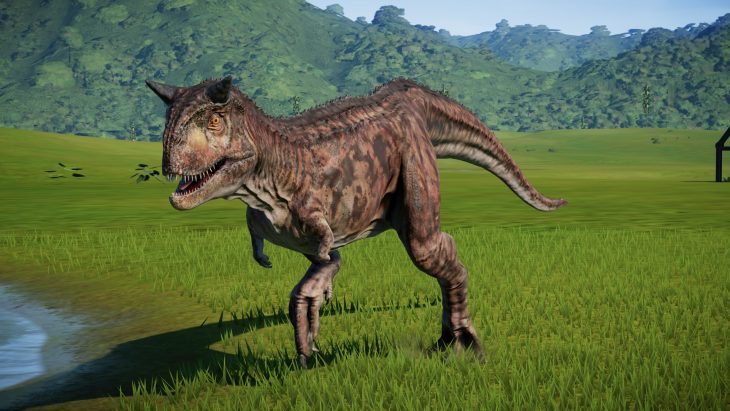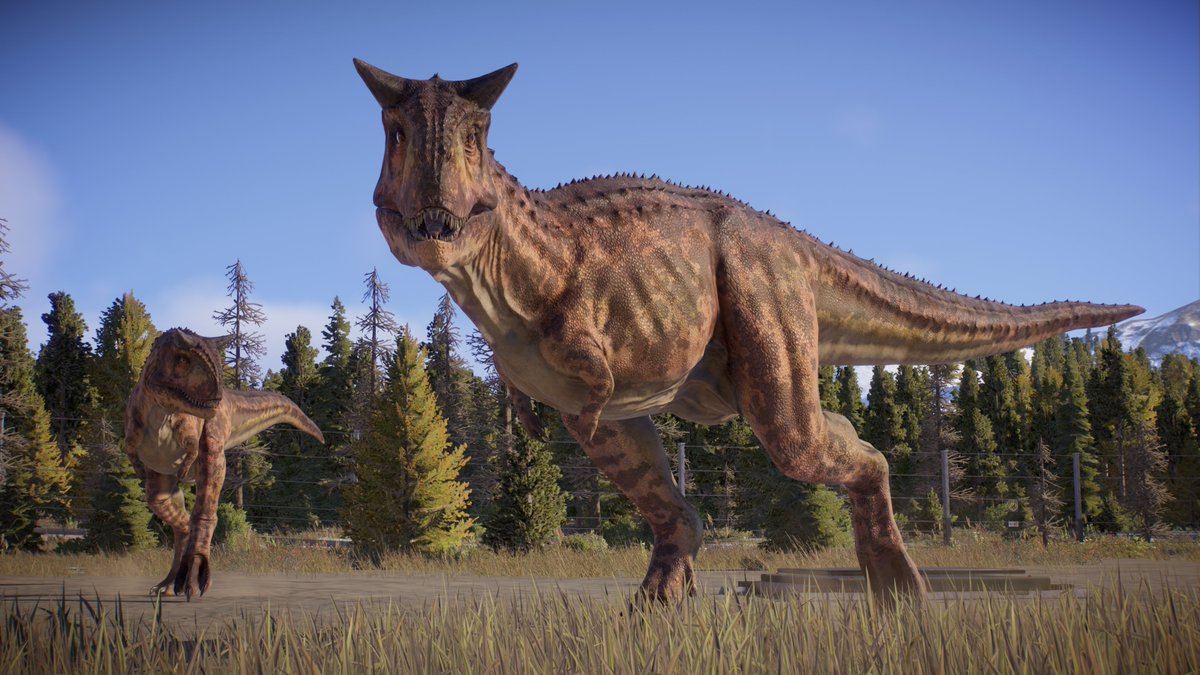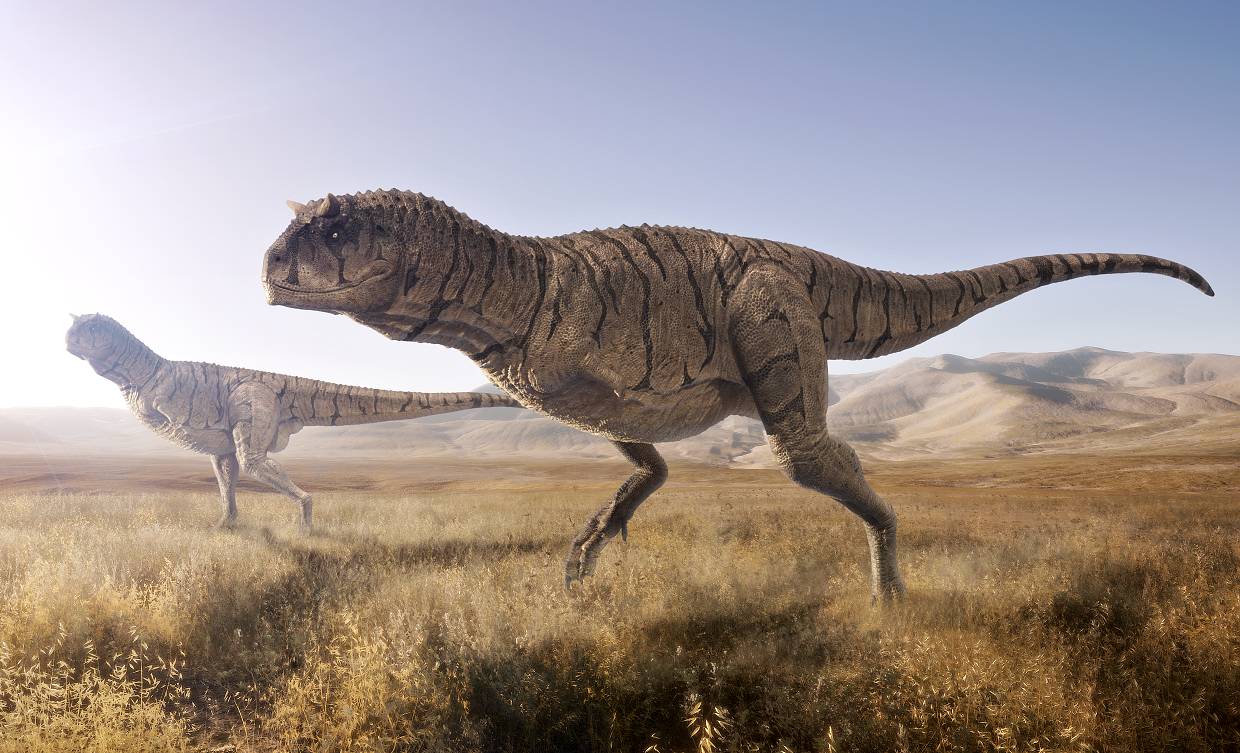
Carnotaurus, meaning “meat-eating bull,” is a fascinating dinosaur that roamed the Earth millions of years ago. With its unique physical features and predatory nature, Carnotaurus captivates the imagination of dinosaur enthusiasts. In this article, we will explore 20 intriguing facts about Carnotaurus that will transport you back to the prehistoric world.
Carnotaurus had Distinctive Horns
Carnotaurus is known for its distinct pair of horns on top of its head. These horns, which can be up to 10 inches long, give Carnotaurus a unique and menacing appearance. They were likely used for display or combat with other dinosaurs.
It Had Tiny Arms
One of the most distinctive features of Carnotaurus is its small, stubby arms. These arms were only about 2 feet long and had only two fingers. Despite their size, Carnotaurus managed to thrive and hunt efficiently using other physical adaptations.
Carnotaurus was a Fast Runner
Carnotaurus was an incredibly fast dinosaur. It could reach speeds of up to 25 miles per hour (40 kilometers per hour), making it one of the fastest known dinosaurs. Its long, slender legs and lightweight body allowed it to pursue and capture its prey with agility.
Carnotaurus had a Unique Skull Shape
The skull of the Carnotaurus was highly specialized. It had a deep and narrow snout with sharp teeth, perfect for slicing through flesh. Its skull structure also provided excellent binocular vision, allowing Carnotaurus to accurately judge distances and track its prey.
It had a Thick Tail
To maintain balance while running at high speeds, Carnotaurus had a thick, muscular tail. This tail acted as a counterbalance to its long body and helped it make quick turns while pursuing prey. The tail also served as a weapon, providing stability and enabling powerful strikes.
Carnotaurus Lived in South America
Carnotaurus fossils have been found in South America, specifically in Argentina. This suggests that Carnotaurus inhabited this region during the Late Cretaceous period, approximately 72 to 69 million years ago.
It was a Carnivorous Predator
As its name suggests, Carnotaurus was a carnivorous dinosaur, feeding on other animals. Its sharp teeth and powerful jaws were adapted for tearing flesh, making it a formidable predator in its ecosystem.

Carnotaurus had a Unique Jaw Structure
The lower jaw of Carnotaurus was hinged differently from other dinosaurs, allowing it to open wider. This unique jaw structure, combined with its sharp teeth, gave Carnotaurus a formidable biting force.
It had Well-developed Olfactory Senses
Carnotaurus had a well-developed sense of smell, allowing it to detect prey from a distance. This olfactory sense was crucial for locating and tracking potential meals in its environment.
Carnotaurus had Excellent Eyesight
In addition to its sense of smell, Carnotaurus had excellent eyesight. Its eyes were positioned on the sides of its head, providing a wide field of vision. This adaptation allowed Carnotaurus to spot potential threats or prey from various angles.
It Belonged to the Theropod Group
Carnotaurus belonged to a group of dinosaurs called theropods, which included other famous carnivorous dinosaurs like Tyrannosaurus rex and Velociraptor. These dinosaurs shared common characteristics such as bipedalism, sharp teeth, and a predatory lifestyle.
It was a Mid-sized Dinosaur
Compared to other theropods, Carnotaurus was considered a mid-sized dinosaur. It measured around 26 to 30 feet in length and weighed approximately 1.5 to 2 tons. Its size made it agile and fast, allowing it to navigate its environment effectively.
Carnotaurus had a Serrated Tail
The tail of Carnotaurus had serrated edges, similar to those found on some theropod dinosaurs. These serrations may have served a defensive purpose or helped in capturing prey by inflicting additional damage.
It had a Unique Respiratory System
Studies have suggested that Carnotaurus had a unique respiratory system that allowed it to take in a large volume of oxygen. This adaptation likely contributed to its high stamina and ability to sustain high-speed pursuits.
Carnotaurus may have had Feathers
Recent discoveries and scientific advancements have indicated that some theropod dinosaurs, including close relatives of Carnotaurus, had feathers. While direct evidence of feathers on the Carnotaurus is limited, it is possible that this dinosaur also had some form of feathers or feather-like structures.
It likely Engaged in Intraspecific Combat
With its robust physical features, including horns and a muscular body, it is believed that Carnotaurus engaged in combat with other members of its species. These confrontations may have been territorial disputes or competition for mates.

Carnotaurus Had Limited Arm Functionality
Despite its small arms, Carnotaurus had limited functionality. While it couldn’t grasp or manipulate objects like some other dinosaurs, it likely used its arms to assist in stabilizing prey or during mating behaviors.
It Existed Alongside Other Dinosaurs
During the Late Cretaceous period, Carnotaurus coexisted with various other dinosaurs. Some of the dinosaur species that shared its environment include Argentinosaurus, Giganotosaurus, and Aniksosaurus. This era was a time of diverse dinosaur populations.
It is Known from Incomplete Fossils
The fossils of Carnotaurus that have been discovered are largely incomplete, making it challenging to reconstruct the entire skeleton with certainty. However, paleontologists have been able to gather valuable information about this dinosaur through the partial remains that have been found.
Conclusion
Carnotaurus was an awe-inspiring dinosaur with its distinctive horns, small arms, and powerful build. Its unique adaptations and physical characteristics allowed it to thrive as a predator in its prehistoric environment. Although much of its life remains a mystery, scientific discoveries continue to shed light on the fascinating world of Carnotaurus and its place in Earth’s history.
Frequently Asked Questions (FAQs)
How big was Carnotaurus?
Carnotaurus measured around 26 to 30 feet in length and weighed approximately 1.5 to 2 tons.
When did Carnotaurus live?
Carnotaurus lived during the Late Cretaceous period, approximately 72 to 69 million years ago.
What did Carnotaurus eat?
Carnotaurus was a carnivorous dinosaur, feeding on other animals. It likely preyed on smaller dinosaurs and other herbivorous creatures of its time.
Did Carnotaurus have any natural predators?
While it’s difficult to determine its natural predators with certainty, larger theropods like Giganotosaurus and Mapusaurus could have posed a threat to Carnotaurus.
What is the meaning of the name Carnotaurus?
The name Carnotaurus is derived from Latin and Greek words, meaning “meat-eating bull.” It refers to its carnivorous nature and the presence of distinctive horns on its head.
Are there any living descendants of Carnotaurus?
No, Carnotaurus and other dinosaurs went extinct millions of years ago. Modern birds are the only surviving descendants of theropod dinosaurs.
Remember, Carnotaurus is just one piece of the vast puzzle of dinosaur history, but its unique features and adaptations continue to captivate scientists and dinosaur enthusiasts alike.
Was this page helpful?
Our commitment to delivering trustworthy and engaging content is at the heart of what we do. Each fact on our site is contributed by real users like you, bringing a wealth of diverse insights and information. To ensure the highest standards of accuracy and reliability, our dedicated editors meticulously review each submission. This process guarantees that the facts we share are not only fascinating but also credible. Trust in our commitment to quality and authenticity as you explore and learn with us.
